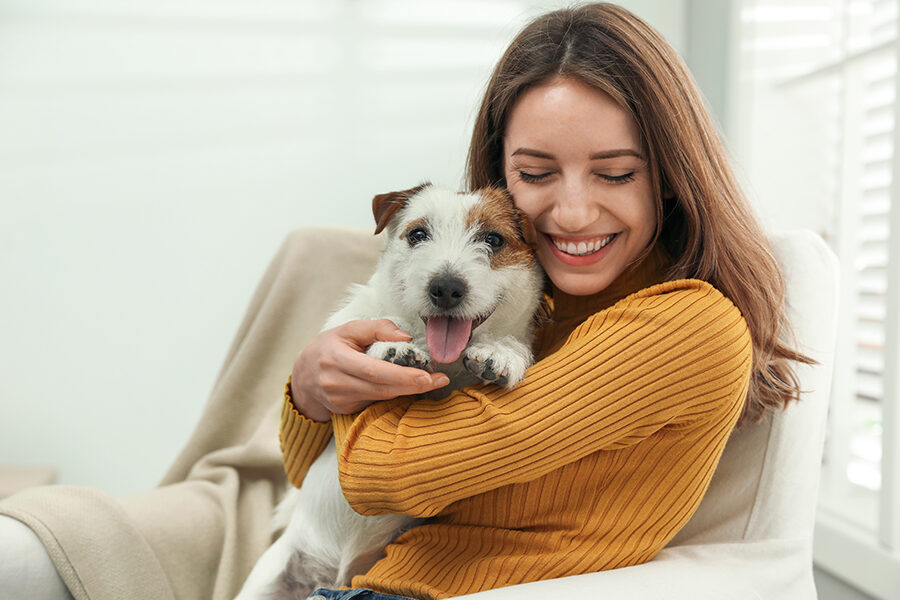Pets are more than just animals; they are companions, confidants, and cherished members of our families. Whether you have a dog, cat, rabbit, or even a parrot, building a strong bond with your pet is essential for their well-being and yours. A strong human-animal connection can lead to a happier, healthier, and more fulfilling relationship. But bonding with a pet isn’t always instant—it requires time, patience, and understanding. Here are some practical strategies to strengthen your connection with your furry, feathered, or scaled friend.
1. Spend Quality Time Together

One of the most effective ways to bond with your pet is simply spending time together. Pets, much like humans, thrive on attention and companionship. Take time out of your day to play with your pet, go for walks, or simply sit together. For dogs, interactive activities like fetch, tug-of-war, or agility exercises can stimulate both their mind and body. Cats enjoy gentle play with toys like feather wands or laser pointers. Even quiet moments, like sitting on the couch while your cat curls up next to you, foster a sense of trust and security. The key is to be present and consistent—pets learn to associate your presence with comfort and affection.
2. Learn Their Language
Understanding your pet’s behavior and body language is crucial for building a strong bond. Dogs use tail wags, ear positions, and vocalizations to communicate. A wagging tail might indicate excitement, while a tucked tail signals fear or discomfort. Cats communicate with their tails, eyes, and posture. Slow blinking, for instance, is a sign of trust and affection. By paying attention to these cues, you can respond appropriately, creating a sense of mutual understanding. When your pet feels heard and understood, trust grows naturally.
3. Establish a Routine
Animals thrive on routine. Regular feeding times, consistent walks, and scheduled play sessions give your pet a sense of stability and predictability. A predictable environment helps reduce anxiety and builds trust. When your pet knows what to expect from you, they feel more secure, which strengthens your emotional connection. Simple rituals, like a morning cuddle session or an evening walk, can become cherished bonding moments that both of you look forward to.
4. Positive Reinforcement Training

Training is not just about teaching your pet commands; it’s a powerful bonding tool. Positive reinforcement—rewarding desired behavior with treats, praise, or affection—helps your pet associate you with positive experiences. Training sessions also stimulate their mind, reduce boredom, and prevent behavioral issues. For dogs, basic obedience commands like sit, stay, and come can create a foundation of trust and communication. For cats, clicker training or reward-based tricks can be equally effective. The key is patience, consistency, and avoiding punishment, which can harm your relationship.
5. Engage in Shared Activities
Engaging in activities that both you and your pet enjoy strengthens your bond and creates happy memories. Dogs might love hiking, swimming, or playing at a dog park. Cats may enjoy exploring new toys, climbing trees, or simply lounging in a sunny spot while you read nearby. Even small activities, like grooming your pet or teaching them new tricks, help reinforce trust. The important thing is to observe their preferences and respect their limits, ensuring every interaction is enjoyable.
6. Provide Physical Affection
Physical touch is a universal language of love. Petting, grooming, and gentle cuddling release oxytocin, the “bonding hormone,” in both humans and animals. Dogs often enjoy belly rubs, back scratches, or ear massages, while cats may prefer gentle stroking along their back or under their chin. However, it’s essential to recognize and respect your pet’s boundaries. Some pets may not enjoy prolonged handling, and forcing affection can damage trust. By learning what makes your pet comfortable, you create moments of genuine connection.
7. Listen and Be Patient
Every pet has a unique personality and may take time to open up. Some animals are naturally affectionate, while others may be shy or cautious. Patience is key—forcing interactions can backfire. Observe your pet’s signals, respect their pace, and allow them to approach you on their terms. Over time, even the most reserved pets can develop a deep bond with their owners through consistent care, understanding, and gentle encouragement.
Conclusion
Bonding with your pet is a journey that involves patience, understanding, and genuine care. By spending quality time together, learning their language, establishing routines, practicing positive reinforcement, engaging in shared activities, providing physical affection, and exercising patience, you can cultivate a strong, lasting connection. A well-bonded pet is not only happier and healthier but also enriches your life with unconditional love, companionship, and joy. Remember, the strength of your bond is a reflection of the love, attention, and respect you give—invest in it, and the rewards are immeasurable.




